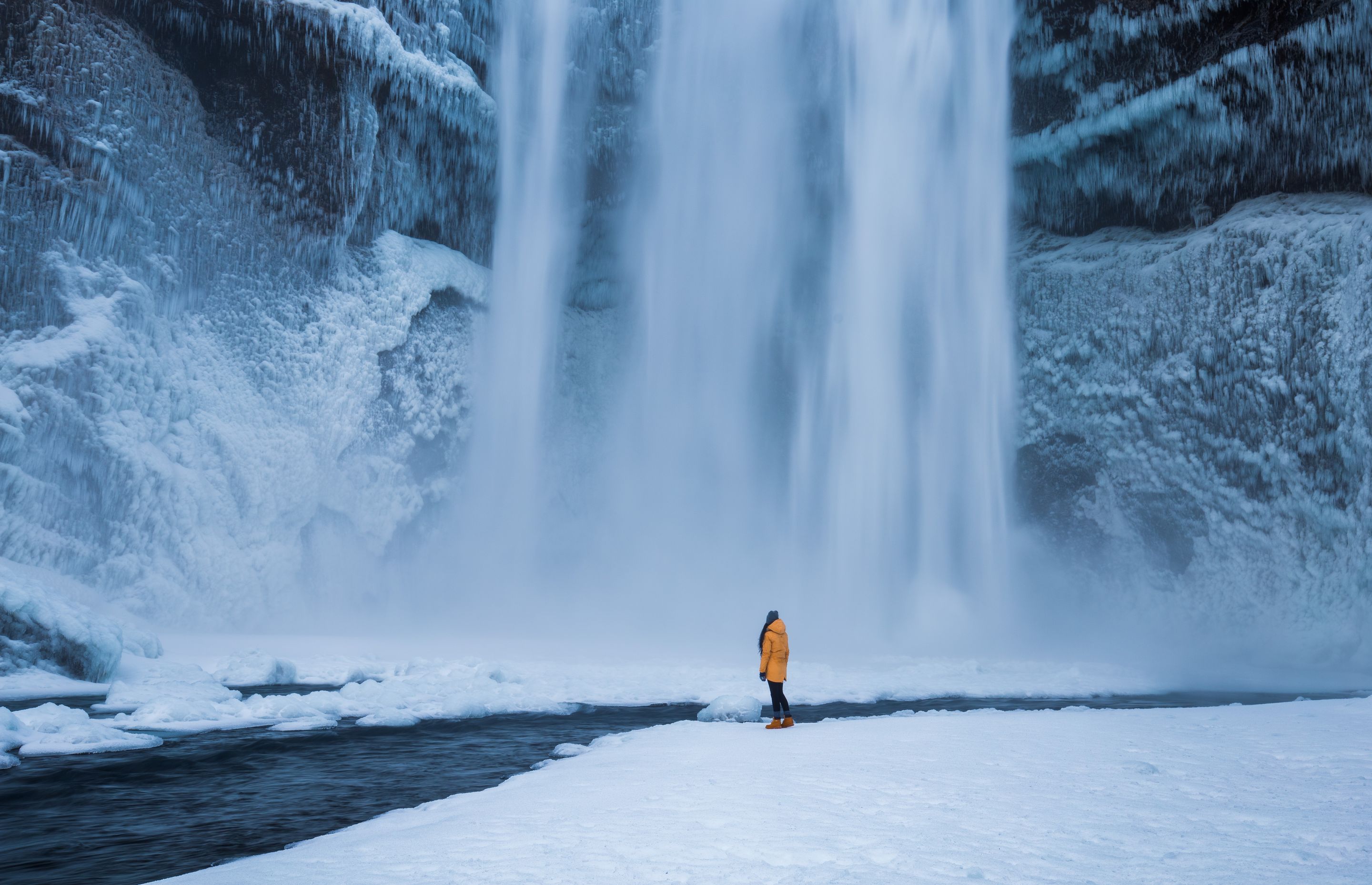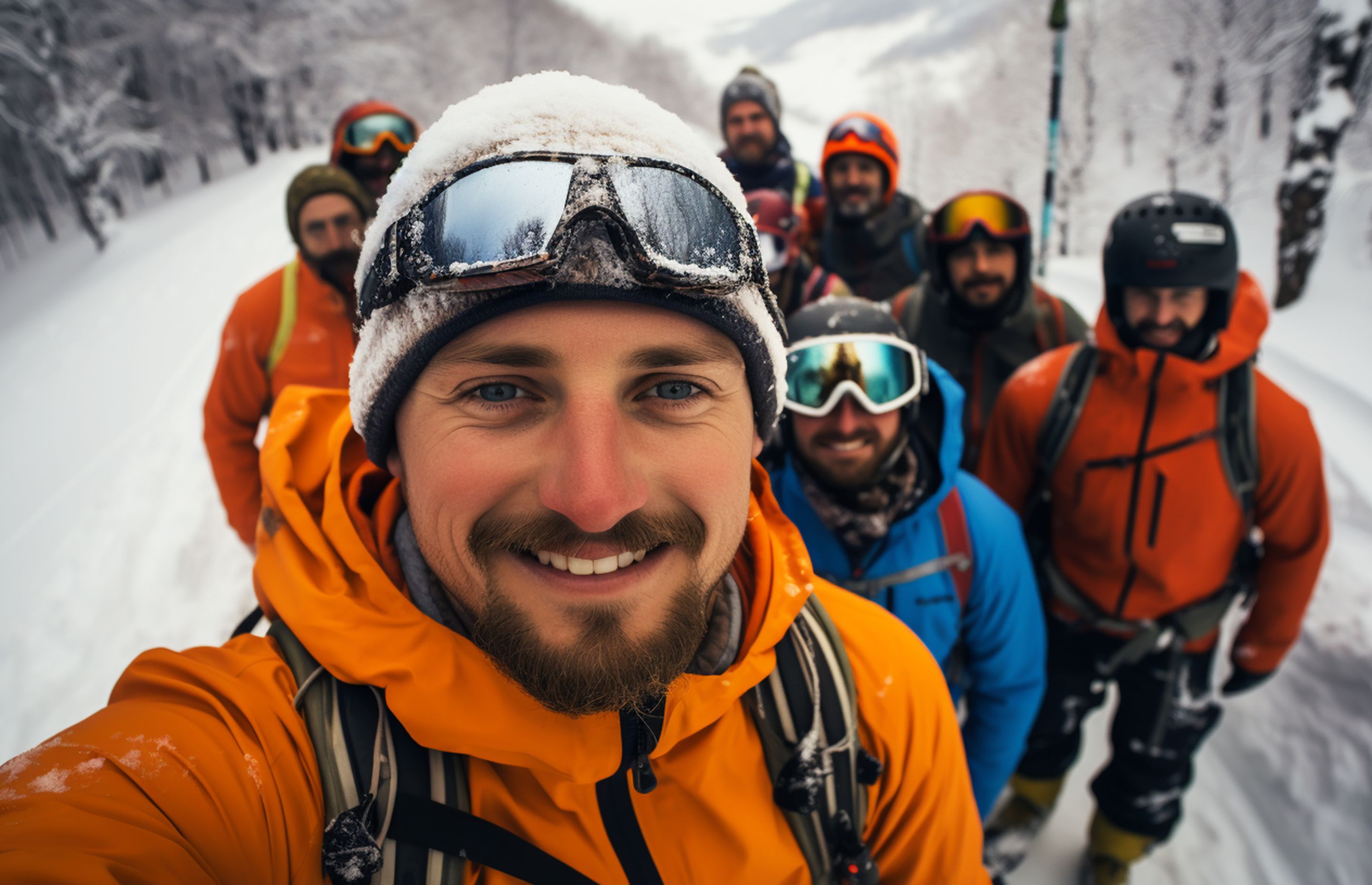
The 15 Top Things To Do in Iceland in March 2025
Jump to chapter
March in Iceland feels like a quieter time between winter and spring. The days are getting a bit longer, which gives you more time to explore. Many places are not as crowded, so you can move at a relaxed pace. The land still has plenty of snow and ice, but there’s enough daylight for activities like hiking, soaking in warm pools, or taking photos of the landscape.
In this guide, you’ll find 15 things worth doing in Iceland this March. They range from visiting natural hot springs to exploring hidden waterfalls and trying bread baked right in the ground.
1. Relax in a Natural Hot Spring
Iceland’s hot springs are a nice way to warm up after being outside in the cold. You can head to Reykjadalur Hot Springs near Hveragerði, where a short hike leads you to a warm river. Another option is the Secret Lagoon near Flúðir, Iceland’s oldest natural pool. This lagoon feels calmer and more real than the bigger, more famous hot springs.
When you lower yourself into the hot water, your muscles relax, and you forget about the cold outside. The soft sound of the water and the gentle steam surrounding you make for a peaceful break. These places show you why Iceland’s geothermal nature is so special.


2. Hike to Lesser-Known Waterfalls
Iceland’s well-known waterfalls are famous for a reason, but the hidden ones can feel more personal. Háifoss is one of the country’s tallest waterfalls, dropping into a deep canyon. Gjáin is another quiet spot with small waterfalls, streams, and green moss, feeling like a secret garden.
Standing near these tucked-away waterfalls, you can hear the sound of rushing water and breathe in clean, cool air without the noise of big crowds. The simple beauty of these places stays with you long after you leave.


3. Attend a Geothermal Bakery Tour in Laugarvatn
In Laugarvatn, people use the ground’s natural heat to bake rye bread by burying the dough and leaving it overnight. At Laugarvatn Fontana, you can watch them dig up the freshly baked bread and taste it immediately. The bread has a mild, slightly sweet flavor and is often served with butter or smoked trout.
This simple activity shows how people here use the land’s natural warmth. As you break open the hot loaf, you can see how closely they live with nature. It’s a small, direct look at how local traditions are tied to the world around them.

4. Try Fat Biking on Snowy Trails
Fat biking uses bikes with wide tires that help you ride on snow without slipping too much. Guided tours can show you safe, scenic paths near Reykjavík or Lake Mývatn. You don’t need a lot of biking skills to give it a try, and the guides provide tips and gear.
As you pedal through the snowy landscape, you’ll hear a soft crunch under your wheels. The open fields and quiet forests look calm, and you can enjoy them at a relaxed pace. Fat biking is a fun way to see parts of Iceland you might miss otherwise.

5. Stroll the Streets of Siglufjörður
Siglufjörður is a small fishing town in North Iceland that used to be very busy during the herring fishing boom. Now it’s quieter, and the Herring Era Museum tells the story of those busy years. Walking around the town, you’ll see colorful houses, a calm harbor, and mountains all around.
As you wander through Siglufjörður, you feel a slower pace of life. You might stop for coffee, watch boats in the harbor, and chat with locals. It’s a nice break that gives you a look into the everyday life and history of Iceland’s coastal towns.

6. Join a Northern Lights Photography Workshop
If you want to photograph the Northern Lights, a workshop can help you learn how. Several companies run tours where experts show you how to set up your camera and pick the right spots. They also explain how to read aurora forecasts so you know when there’s a good chance of seeing them.
Standing outside under the dark sky, you wait for the lights to appear. When they do, they sway and change color right above you. Having a guide to help you capture that moment on camera makes the experience even more rewarding.

7. Visit Turf-House Villages
Turf houses are old homes made partly from earth and grass that kept people warm in rough weather back in the day. They show how Icelanders adapted to their environment. At Glaumbær, you can see these old houses and imagine how families lived in them long ago.
Walking inside these homes, you notice the low ceilings, the smell of wood and earth, and the simple furniture. They feel cozy and practical, giving you a sense of how people once lived closely with the land. This glimpse into the past is both interesting and calming.

8. Explore Indoor Food Markets
Iceland’s indoor markets, like Kolaportið in Reykjavík or Hlemmur Mathöll, offer a warm place to try local foods. You can taste dried fish, freshly baked bread, pastries, and other treats. Talking with the vendors, you learn about their products and maybe pick up a few local snacks.
The scents of fresh food, the sounds of people chatting, and the bright displays of products make these markets feel comfortable and welcoming. It’s a nice way to get to know Iceland’s food traditions without being out in the cold.

9. Take a Day Trip to the Westman Islands (Vestmannaeyjar)
A short ferry ride from the south coast takes you to the Westman Islands. On Heimaey, the main island, the Eldheimar Museum shows how a volcanic eruption in 1973 changed the town. You can walk over lava fields and see how the island looks today.
This visit shows you the strength of both nature and local people. The black lava fields remind you that the land here is still changing. It’s a place where you can feel the force of nature and the will of the community at the same time.

10. Experience a Community Pool in a Small Town
Most Icelandic towns have a public swimming pool heated by natural hot water. You can find many listed on sundlaugar.is. In Borgarnes, the pool looks out over a broad fjord, while in Hofsós, you’ll find a pool with a gentle view of the sea and distant hills. Locals come to these pools to relax, chat, and unwind after work. Visiting one gives you a chance to join in on this everyday routine.
As you soak in a hot tub, you might talk with someone from town, learn a bit about their daily life, or just enjoy the quiet warmth. These pools are not fancy, but that’s what makes them special. They show you a simple part of life here that visitors often miss.

Hofsós swimming pool
11. Try Snowshoeing in Remote Landscapes
Snowshoeing is a gentle way to explore Iceland’s winter scenery. Guided tours in places like Vatnajökull National Park or Lake Mývatn help you find safe paths and give you gear. You don’t need much skill—just be ready to walk.
As you move through snowy fields and forests, the only sound might be the crunch of snow under your feet. It’s peaceful and slow, letting you really notice the land around you. You can pause, look around, and feel the calm of the outdoors.

12. Explore the Reykjanes Peninsula
Close to Reykjavík, the Reykjanes Peninsula has steaming vents, bubbling mud pools, and tall cliffs. You can find maps and tips at reykjanesgeopark.is. As you explore, you’ll see how the earth’s heat escapes through cracks and how the ocean shapes the coast.
Wandering this area gives you a sense of Iceland’s raw power. Steam rises from the ground, and you can smell the minerals in the air. It’s a reminder that the island sits on active ground, always changing over time.

13. Explore the Snæfellsnes Peninsula
Snæfellsnes is often called “Iceland in Miniature” because it has such a variety of landscapes in one place. In this area, you’ll find a glacier-topped volcano, black-sand beaches, lava fields, and small fishing villages. Famous spots include Kirkjufell, Iceland’s most famous mountain, with Kirkjufellsfoss waterfall nearby, as well as the rocky cliffs of Lóndrangar and the coastal views around Arnarstapi.
As you drive through Snæfellsnes, you’ll see one striking sight after another. You can pause to walk around these landmarks or simply take in the scenery from the road. It’s a simple, direct way to enjoy many sides of Iceland’s natural beauty in one region.

14. Tour the Golden Circle (Þingvellir, Geysir, Gullfoss)
The Golden Circle is a popular route showing three key places: Þingvellir National Park, where two continents meet; the Geysir area, where hot water erupts from the ground; and Gullfoss, a powerful waterfall. It’s an easy loop to drive and a simple way to see some of Iceland’s top sights in one go.
Visiting these places helps you understand why people keep coming to Iceland. You see how the land moves, how water changes shape, and where early Icelanders gathered. It gives you a clear idea of the natural forces and rich history that shaped the country.



15. Go Whale Watching from Reykjavík
Boats leave from Reykjavík’s Old Harbor to look for whales and dolphins in Faxaflói Bay. Guides are super knowledgeable about the animals and always keep a sharp eye to ensure you don't miss a thing. You might see minke whales, dolphins, or even orcas.
Standing on the deck, breathing the salty air, you’ll feel the thrill of spotting a whale in the wild. Even if you don’t see one, the boat ride offers fresh air, views of the city from the water, and a better understanding of Iceland’s marine life.

Conclusion
March 2025 in Iceland is a good time to explore comfortably. You can soak in hot springs, taste bread baked in the ground, watch the Northern Lights, and talk to locals at a community pool. These experiences bring you closer to the land and the culture.
With these 15 ideas, you can plan your trip without feeling rushed. Each activity offers something simple and real about Iceland—its nature, history, and everyday life. After your visit, you’ll go home with memories that feel honest and personal.


